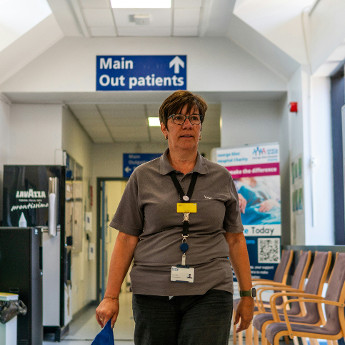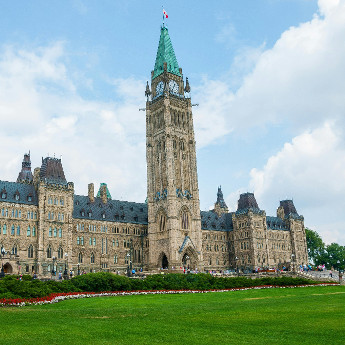When we think about healthcare, municipal governments might not be the first thing that comes to mind. After all, they don’t run hospitals or provide cancer treatments the way provincial and territorial governments do. But local governments shape the communities where we live, and this has a huge influence on our health and wellbeing.
So, what exactly is a municipality? Municipal governments, also called local governments, are the level of government closest to home. They govern towns, cities, villages, counties, and regions. There are more than 5,000 municipalities in Canada, ranging from fewer than 10 residents to more than 2.7 million. Local governments are rooted in communities, so they often understand the unique needs of their residents better than provincial or federal governments.
In this blog post, we’ll explore how local governments influence health, what this means for people affected by breast cancer, and how you can get involved in advocacy at the municipal level.
Public Health
One of the most important roles local governments play is in public health. Provincial and municipal governments often partner together to share resources and provide local public health services. They are responsible for implementing provincial public health policies and making decisions about health at the community level. This can include running vaccination clinics, providing school health programs, offering sexual health or parenting support, or promoting healthy lifestyles through awareness campaigns.
A clear example of this partnership was during the COVID-19 pandemic, when municipalities reported case numbers, enforced provincial health measures, and put local bylaws in place. For people affected by breast cancer, local governments may also play a role in raising awareness about mammograms, connecting residents with screening programs, or addressing environmental concerns like air quality that influence long-term health.
Researchers have found that due to their smaller size, local governments tend to be adaptable and respond faster to health issues than provincial or federal governments. In fact, some of the provincial public health protections we now take for granted started at the local level. For example, nearly 90% of Ontarians were covered by local non-smoking measures before the province introduced the Smoke-Free Ontario Act in 2006.
If you notice gaps in public health in your community, your local government is a good place to raise these concerns. This could be anything from sharing breast health information more widely, to alerting them about environmental threats like unsafe drinking water or air pollution. The best way to contact your local government is to search online for your town’s website or city councillors contact information.
Social Services
Municipal governments also provide many social services that shape health and quality of life. These include 911 and paramedic services, community centres, libraries, and in some cases, mental health or addiction supports.
For someone going through breast cancer treatment, these services can make a real difference. Emergency services ensure urgent care is available when you need it. Libraries and community centres often host support groups, educational programs, and health clinics, while also acting as hubs for social and recreational activities.
Local governments rely on residents to be active participants in their communities. If you have ideas about how social services could better support people with breast cancer, your local library or community centre is a great place to start. They may be able to connect you with the right decision-makers, provide space for events, or share resources more widely.
To find social services for people with breast cancer in your area, check out the Canadian Cancer Society's Community Service Locator.
Active Living
Municipalities also support active living by offering opportunities for recreation and leisure that support residents’ health and well-being. Think of your local public pool, tennis courts, or pick-up hockey. And don’t forget the pickleball! These services help create active, connected communities.
More than simply being fun, recreation is linked to health for its physical and social benefits. It is a well-known fact that exercise has been proven to help with cancer-related fatigue. Exercise can also help manage cancer-related brain fog, pain, and other side effects of treatment. Also, socializing helps to prevent loneliness and can give us a sense of purpose and belonging. For people affected by breast cancer, accessible recreation opportunities can make recovery easier while improving mental health and quality of life.
If recreation programs that meet your needs aren’t available in your community, you can advocate for more. Asking your local government to expand programs or improve accessibility can benefit not just you, but many others in your community. Learn more about exercise and breast cancer here.
Infrastructure
Municipalities also manage the infrastructure that keeps daily life running smoothly and this can be especially important during or after a breast cancer diagnosis. This includes services like water and wastewater, garbage and recycling, road and sidewalk maintenance, and public transportation. It also includes zoning decisions that affect where homes, shops, and services are located. While these may not sound like health issues at first, they directly impact how easily you can access care, stay in your community during treatment, and maintain a good quality of life. Public health experts call these the social determinants of health.
For people with breast cancer, infrastructure can mean the difference between getting timely treatment and facing major barriers. Dependable public transit, for example, may determine whether someone can get to their appointments. Clean water and safe housing can reduce additional health risks during and after treatment. Zoning and urban planning decisions can influence whether clinics, pharmacies, or healthy and affordable food options are available nearby.
When these basic needs are not met, it often means people have a much harder time staying healthy, especially if they already face challenges like low income, disability, or limited support. If your town or city isn’t meeting these basic needs, you can raise your concerns with your local councillors or public service representatives. Many municipalities list their councillors online, and you can find yours through a Google search.
Why This Matters
Even though municipal governments do not provide direct cancer care, they dramatically shape the environments where we live, work, and recover. Public health, social services, active living, and infrastructure all play important roles in our health and wellbeing.
Starting close to home can be one of the most effective ways to make change for people with breast cancer. Whether you advocate for more community programs, stronger public health protections, or better basic services, you can help create healthier, more supportive communities.









